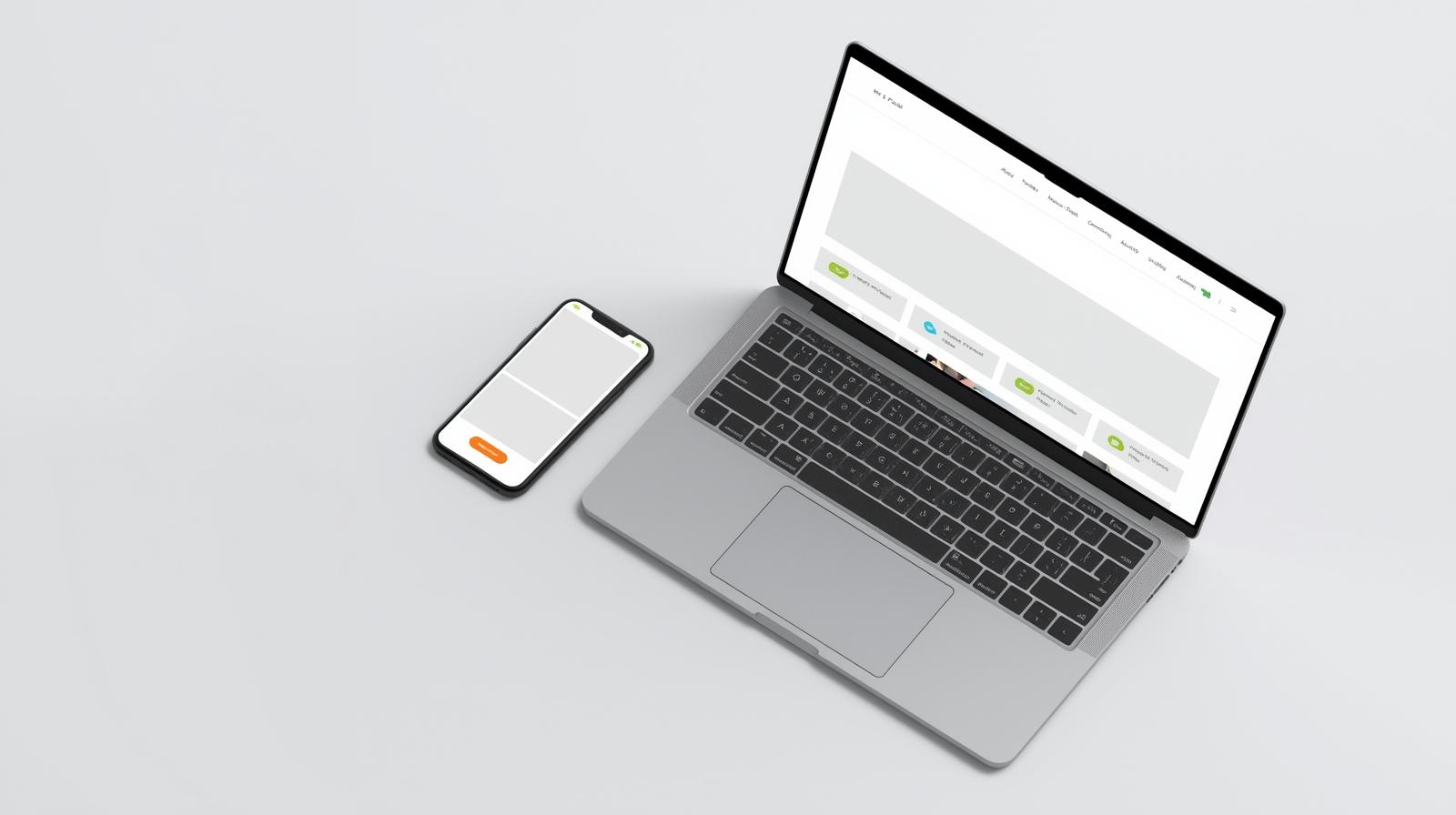Introduction
Small changes in your website or app’s interface can have an outsized impact on conversion rates—without the need for a full-scale website redesign. By understanding and applying the right UI principles, businesses can enhance usability, guide user attention, and encourage desired actions, all while keeping costs low and implementation fast.
Effective UI principles leverage cognitive psychology, visual hierarchy, and intuitive design to create interfaces that feel natural and engaging.
From button placement to content layout, subtle adjustments can dramatically improve engagement, click-throughs, and overall conversions.
This guide explores UI principles that boost conversions without redesigning, offering actionable strategies for optimizing existing pages, improving user experience, and driving measurable results.
Whether you’re a marketer, designer, or business owner, these techniques provide sustainable ways to enhance your interface, increase user satisfaction, and maximize ROI—without the time, expense, and disruption of a complete redesign.
Why UI Principles Matter for Conversions
A well-designed user interface directly impacts user engagement and conversion rates. Applying the right UI principles ensures that users can navigate your website or app effortlessly, find relevant information quickly, and complete desired actions with minimal friction.
Even small interface changes—like adjusting button placement, improving readability, or streamlining forms—can significantly boost conversions without a full redesign.
One of the key benefits of focusing on UI principles is cost-effectiveness. Minor improvements in layout, visual hierarchy, or interactive elements often yield higher ROI than investing in large-scale redesigns.
Cognitive psychology also plays a crucial role. Understanding how users perceive information, make decisions, and respond to visual cues allows you to design interfaces that align with expectations and naturally guide behavior.
By leveraging psychological triggers such as visual emphasis, progressive disclosure, and feedback cues, businesses can optimize user journeys and increase conversions sustainably.
How Cognitive Psychology Influences UI Principles
Explains concepts like Hick’s Law, Fitts’ Law, and the principle of progressive disclosure, showing how they guide user actions.
Small UI Changes That Boost Engagement and Conversions
Discuss micro-interactions, simplified navigation, clearer call-to-action buttons, and improved readability as immediate ways to enhance engagement.

Core UI Principles That Boost Conversions Without Redesigning
Implementing UI principles effectively can elevate user experience and drive conversions without the need for costly redesigns. By focusing on actionable, high-impact strategies, businesses can optimize existing interfaces for better performance.
Clear Visual Hierarchy as a Key UI Principle
Visual hierarchy determines how users process information. Prioritize important elements like headings, call-to-action buttons, and key content areas using size, spacing, and positioning.
A clear hierarchy guides users naturally through your interface, reducing cognitive load and increasing the likelihood of completing desired actions.
Consistency in Layout and Design Elements
Consistency fosters familiarity and trust. Reusing styles, navigation patterns, and interactive elements across pages creates a cohesive experience that reduces confusion and reinforces brand credibility.
Consistent UI design also accelerates user decision-making, contributing to higher engagement and conversions.
Effective Use of Color, Contrast, and Typography
Colors influence perception, attention, and emotion. Strategic use of contrasting colors highlights important actions, while harmonious palettes improve readability and comfort.
Typography should prioritize clarity, hierarchy, and legibility across devices. When applied thoughtfully, these UI principles create visually appealing interfaces that guide users toward conversion points.
Additional techniques include spacing, micro-interactions, and intuitive iconography, all of which can be adjusted incrementally to maximize impact.
By leveraging data-driven insights and applying best UX/UI design, businesses can optimize existing interfaces to maximize engagement and conversions.

Improving User Interaction and Click-Throughs
Enhancing user interaction is a critical step in boosting conversions without redesigning your interface. By applying proven UI principles, businesses can make navigation intuitive, highlight important actions, and encourage engagement across all devices.
Even small adjustments, like refining button placement or simplifying forms, can significantly increase click-through rates and user satisfaction.
Focusing on usability ensures that users can effortlessly complete tasks, reducing friction and minimizing drop-offs. Key areas of improvement include visual cues, clear feedback mechanisms, and prioritizing critical actions above the fold. These subtle changes improve perceived value and guide users toward conversion points naturally.
Optimizing Calls-to-Action Using UI Principles
Well-designed calls-to-action (CTAs) grab attention and motivate action. Using contrasting colors, concise copy, and prominent placement aligned with UI principles encourages users to click, sign up, or make purchases. Testing CTA variations ensures optimal performance without a full redesign.
Streamlining Navigation Without Redesign
Simplified menus, intuitive hierarchy, and contextual links help users find information quickly. Applying UI principles to navigation reduces cognitive load, keeps visitors engaged, and increases the likelihood of conversions, all without overhauling the entire interface.
Leveraging Feedback and Analytics for UI Enhancements
Understanding how users interact with your website is crucial for applying UI principles that boost conversions without redesigning.
Feedback, heatmaps, session recordings, and analytics provide insights into pain points, drop-offs, and high-performing elements. By leveraging this data, businesses can prioritize adjustments that maximize engagement and ROI.
Tracking user behavior reveals patterns such as where visitors hesitate, which buttons are ignored, and how they navigate between pages.
These insights allow teams to refine interface elements, optimize workflows, and enhance usability—all while avoiding costly redesigns.
Analyzing User Behavior to Prioritize UI Changes
Identify friction points using analytics tools, surveys, or A/B testing. By combining quantitative data (click rates, scroll depth, conversion paths) with qualitative feedback, you can apply UI principles strategically, focusing on changes that have the highest impact on engagement and conversions.
Data-Driven Adjustments to Boost Conversions
Implement iterative improvements based on observed behavior. Adjust CTA placement, tweak form fields, or highlight key content using established UI principles.
Continuous monitoring ensures these enhancements deliver measurable gains and long-term benefits for your digital experience.

Common UI Mistakes That Undermine UI Principles and Reduce Conversions
Even small missteps in interface design can significantly hinder conversions. Common mistakes include cluttered layouts, inconsistent design elements, confusing navigation, slow-loading pages, and poor readability.
Ignoring these issues often leads to frustrated users, high bounce rates, and lost revenue. Many websites fall into the trap of overloading pages with unnecessary graphics, too many options, or excessive text, which overwhelms visitors and obscures key calls-to-action.
Adhering to core UI principles ensures these pitfalls are avoided. Small, strategic improvements—like simplifying page layouts, maintaining consistent typography and color schemes, using whitespace effectively, and improving visual hierarchy—can enhance usability and engagement without requiring a full redesign.
Additionally, optimizing button placement, labeling, and interactive elements in line with established UI principles helps guide users naturally through conversion paths, making the journey smoother and more intuitive.
Why Avoiding UI Overcomplication is Crucial
Overcomplicated interfaces overwhelm users and dilute the effectiveness of calls-to-action. Applying UI principles such as clarity, consistency, and intuitive navigation ensures that every element supports conversions.
Simplifying choices, reducing distractions, and prioritizing essential actions create a streamlined experience that encourages interaction and improves overall website performance.
When users can navigate your site effortlessly, trust builds, engagement rises, and conversion opportunities increase—all without the need for costly redesigns.
Conclusion: Applying UI Principles for Lasting Impact
Small, strategic adjustments guided by core UI principles can deliver significant improvements in user engagement, click-throughs, and conversions—without the need for a costly redesign.
By prioritizing clarity, consistency, and intuitive navigation, businesses can create interfaces that feel seamless and encourage desired user actions.
Sustainable UI enhancements, such as optimizing calls-to-action, refining visual hierarchy, and leveraging color and typography effectively, ensure that every element contributes to a better user experience.
Tracking analytics and collecting user feedback allows continuous refinement, helping maintain high performance over time.
Implementing these UI principles as actionable strategies empowers businesses to boost conversions while preserving resources, making interfaces more user-friendly and results-driven.
Even small changes, when thoughtfully applied, can have a lasting impact on overall website effectiveness and business growth.


